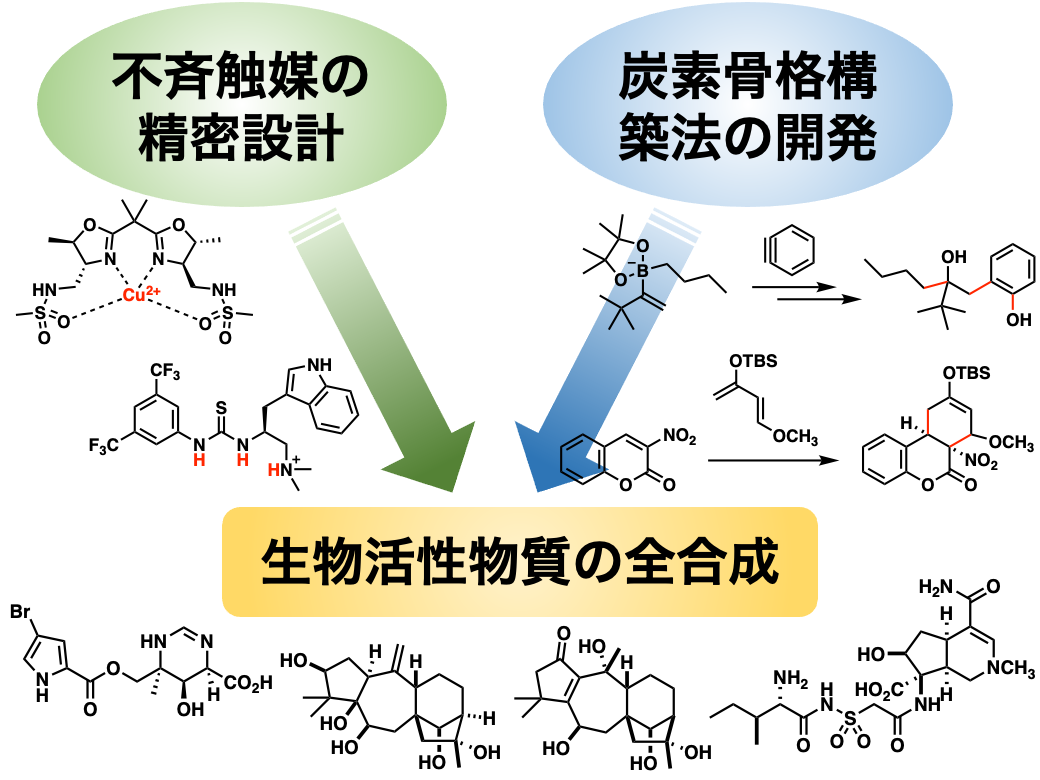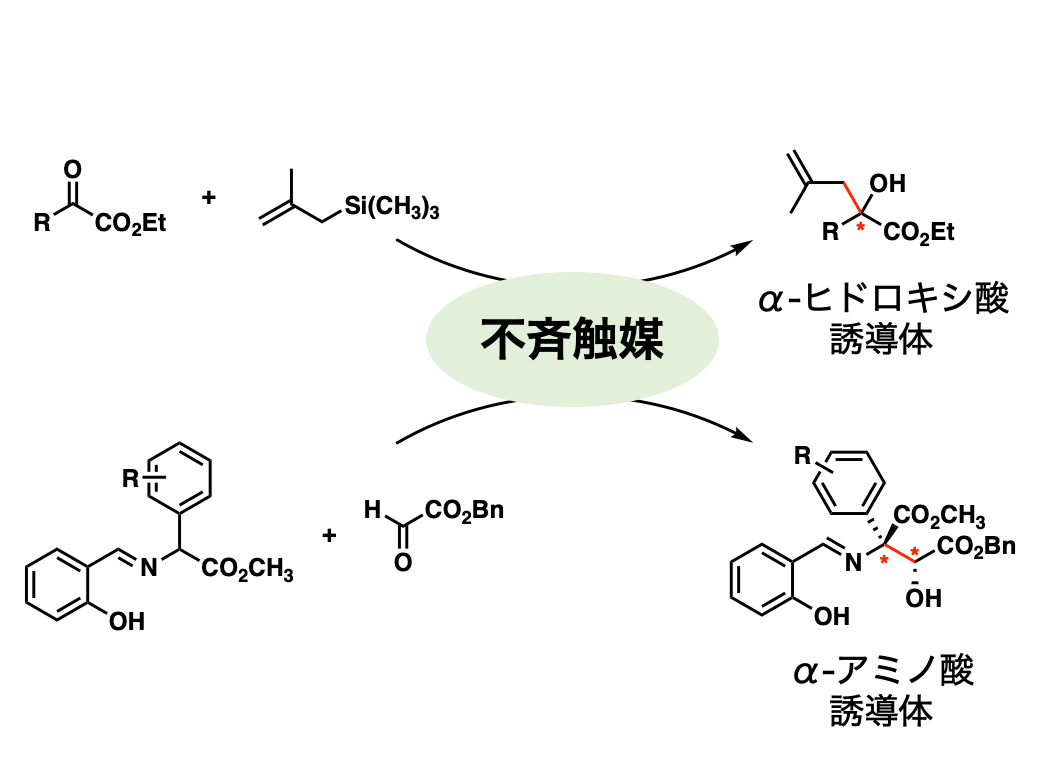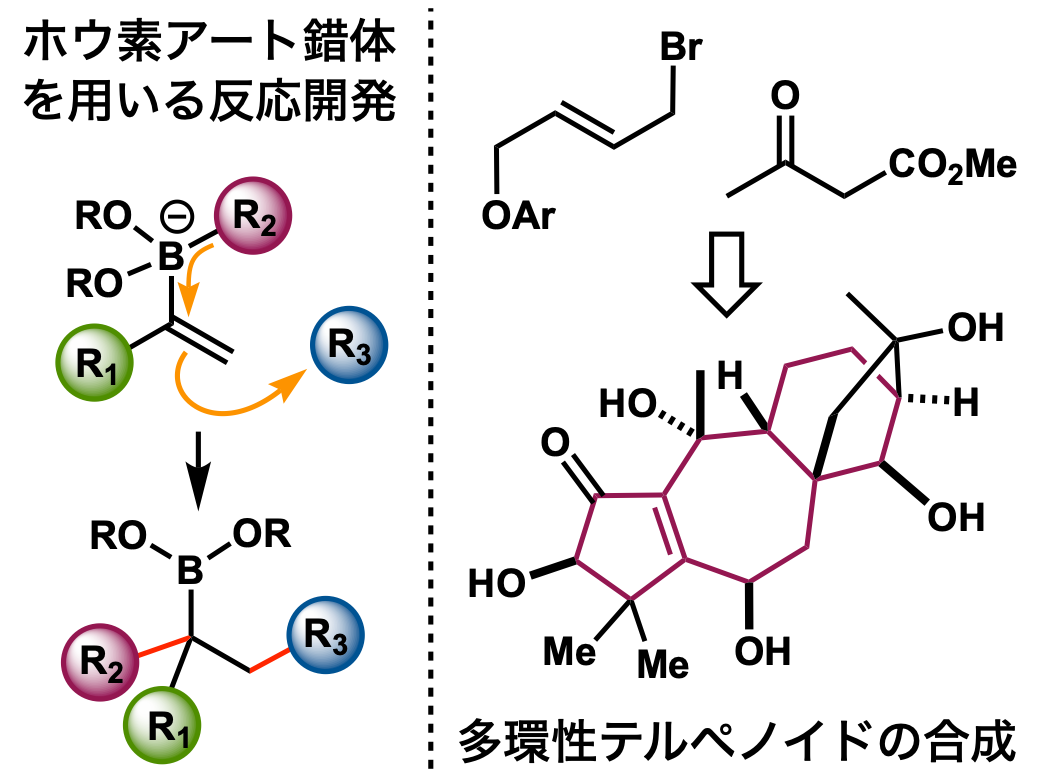Bioorganic Chemistry

There have been obtained many natural organic compounds that exhibit unique biological activities. These bioactive substances are useful as pharmaceuticals and their lead compounds. We are developing methods for the chemical synthesis of these bioactive compounds with diverse functional groups and complex carbon skeletons. Considering the viewpoint of “clean,” that is environmentally benign, organic synthetic chemistry, we have been designing a catalyst system that can stereoselectively synthesize organic compounds with various functional groups, and have been developing carbon-carbon bond formation reactions that can construct complex carbon skeletons.
|
We are developing methods for the synthesis of chiral alpha-amino acids and alpha-hydroxy acids, which are important substructures in bioactive natural compounds. To promote carbon-carbon bond formation reactions stereoselectively, chiral catalysts have been developed. For example, allylation of alpha-keto esters and aldol reaction of alpha-imino esters were promoted by chiral Lewis acid catalysts to give alpha-hydroxy acid derivatives and alpha-amino acid derivatives enantioselectively.
 |
|
|---|
Boron is a unique element that can assist in the formation of carbon-carbon bonds, which are the most important bonds in organic chemistry. With using a nature of boron to form “ate-complex”, we are developing a synthetic methodology to construct structurally complex functional materials without the use of toxic metals. Development of the efficient synthetic route to bioactive terpenoid natural products is also an attractive topic for our team. We are trying to construct a complex carbon framework of these molecules using “annulation” and “rearrangement” as a key reaction.


